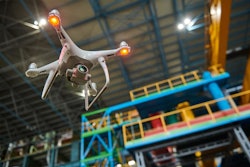
The movement of food from farms to tables relies on multifaceted global supply chains that grow, process, distribute, transport and sell food quickly and safely. The impact of the Coronavirus disease (COVID-19) cannot be downplayed. The pandemic has caused considerable disruption in the global food system, which employs 1.5 billion people and accounts for 10% of the world’s GDP.
As the world has taken measures to combat the spread of COVID-19, government restrictions, such as travel bans, border closures, social distancing, lockdowns, restricted transportation and the temporary shutdown of non-essential businesses (ie., the foodservice industry) have created a disruptive ripple effect across the global food supply chain.
We can look at the U.S. market as an example. According to McKinsey, consumer spending on food was stable and close to equal between retail and foodservice companies for the previous five years. Since March, the trend has turned upside down. Retailers saw a 29% increase in sales as consumers stockpiled groceries and supplies. On the other hand, foodservice industry sales declined by 27% due to temporary shutdowns and social distancing measures that kept consumers eating at home.
The entire value chain was upset and bottlenecked in various ways, as seen across the globe:
- Panic buying resulted in product shortages that few manufacturers and retailers were prepared for.
- Restaurant closures created an excess inventory for distributors and suppliers who scrambled to adjust output and redirect stock to other outlets. This put its perishable items at risk.
- Processing plants had to maintain production with a reduced workforce, while others were forced to shut down for containment reasons.
- Farmers faced labor shortages because of its dependency on migrant workers and social distancing regulations. The ability to harvest crops was put at risk.
- Food transportation became a problematic and costly nightmare, with travel and border restrictions impacting how quickly fresh food could get its destination.
- Grocery retailers experienced sourcing challenges that caused some difficult-to-make products to disappear from the shelves.
- Fluctuating product availability meant an increase in prices from suppliers that got passed on to consumers to pay from foodservice companies and retailers.
Resilience feeds the world
Despite the immediate impacts and continued stressors COVID-19 created, global food chains demonstrated resilience and stabilized to some degree. Part of this is owed to policymakers' response to ensure food supply chains function and avoid devastating consequences.
The Organization for Economic Co-operation and Development (OECD) highlighted ways the food supply chain showed resilience, in particular in the EU:
- Safety stocks were held at various points in the supply chain and drawn on when there was a spike in demand to help keep grocery store shelves replenished.
- Food processors and retailers adapted by hiring additional employees, increasing operating hours, and reducing product variety to focus on items most in demand.
- The search for alternative sources of supply commenced.
- Supply chain players began introducing new delivery methods through digital technologies, such as farmers selling directly to consumers and restaurants switching to take-out and delivery.
- Policymakers facilitated logistics recovery by introducing measures like "green lanes," streamlined certification and more relaxed food regulations.
While gradual steps were taken to aid in recovery, food supply chains can now reimagine their supply chains' design to collaborate better with actors across the value chain and optimize operations when faced with disruption.
Fueling the fire for more visibility
A root problem that exasperated the impact of COVID-19 on the food supply chain was limited visibility. A lack of end-to-end visibility prevented a proactive response. There was little insight into supply and demand and what was occurring both upstream and downstream in the chain.
Shared data across the value chain can provide clear visibility between production, distribution, transportation, and retail and food service. Visibility will allow the food supply chain to:
- Predict and plan for shortages and delays
- Improve accuracy in product forecasts
- Assure that food is handled safely
- Build confidence with consumers
The next step for food supply chain leaders is to look to digital technologies that can facilitate transformation and build a resilient and collaborative value chain. Enterprise resource planning, transportation management systems, warehouse management system and manufacturing execution systems have allowed organizations over the last decade to collect an abundance of data. By infusing innovative technologies like artificial intelligence and blockchain into the mix, food supply chains can break from siloed systems to implement and optimize a digital supply chain that offers visibility and insight from the fields and farms to grocery store shelves and restaurant tables.


















